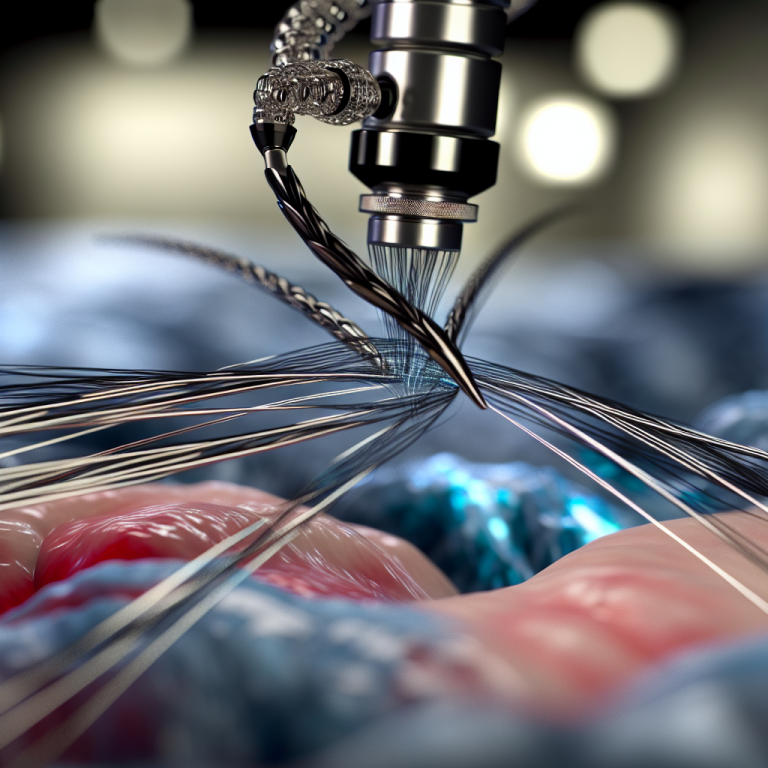In the world of minimally invasive surgery, the demand for precise manipulation of flexible surgical tools is crucial. This necessity has led to the development of miniature flexible robotic probes that can direct surgical instruments with incredible accuracy. Enter Fiberbots, a cutting-edge innovation that is revolutionizing minimally invasive surgical procedures.
The Fiberbot is a robotic fiber that has been designed with a thermal actuation mechanism, allowing for local heating along the sides of a single fiber. This innovative technology was fabricated using polymer-based materials and a highly scalable fiber drawing process that utilizes common, low-cost materials. What sets the Fiberbot apart is its incredibly low-profile design, with a diameter of less than 2 millimeters, and its remarkable motion precision, with a repeatability of less than 50 micrometers.
Controlled by sophisticated algorithms that interface with endoscopic instruments, the Fiberbot showcases high-resolution capabilities for on-the-spot molecular and morphological tissue mapping. To assess its practicality and safety during in vivo laparoscopic surgery, researchers conducted tests on a porcine model. The results were promising, showing that the high-precision motion of the Fiberbot delivered endoscopically could facilitate cellular-level tissue identification and ablation technologies, potentially revolutionizing the removal of cancer in challenging surgical sites.
In surgical oncology, the main goal is to achieve complete resection of cancerous tissue while minimizing injury to surrounding healthy tissue. This task presents a formidable challenge to surgeons, especially in minimally invasive surgery (MIS). One of the key challenges faced in MIS is the need for precise tissue dissection while ensuring a safe margin that includes adjacent healthy tissue for histopathological assessment.
Researchers are exploring the use of high-precision surgical instruments to address these challenges, including tools for precise tissue dissection, cellular-level intraoperative diagnostic devices, and robotic instruments. For example, in soft tissue resection, infrared surgical lasers and carbon dioxide (CO2) lasers have been delivered via special hollow core fibers to enhance MIS by providing superior precision in tissue dissection while minimizing thermal spread to adjacent healthy tissues.
Furthermore, emerging cellular-level diagnostic technologies offer great promise for intraoperative tissue identification and characterization at a microscopic level. By integrating these therapeutic and diagnostic tools with high-precision robotic instruments, surgeons can maneuver tools with confidence around critical structures, minimizing the risk of leaving diseased tissue remnants while also reducing the amount of healthy tissue that is currently excised during manual margin assessments.
In conclusion, the Fiberbot represents a significant advancement in the field of robotic fibers for high-precision minimally invasive surgery. Its potential to improve the accuracy and safety of surgical procedures while minimizing tissue damage is a promising development that could revolutionize surgical oncology and other areas of surgery in the near future.




